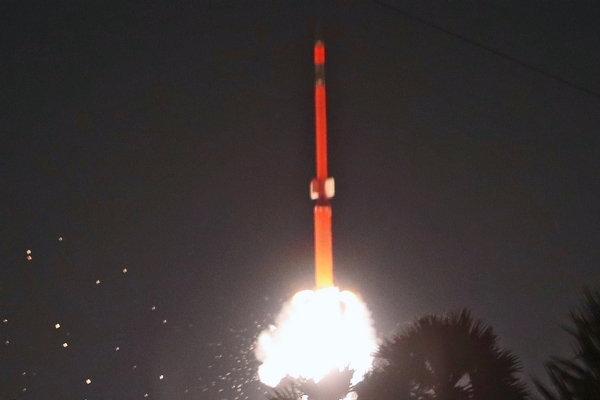ISRO successfully launches sounding rocket
Total Views |
Sriharikota, March 13: In a major development, the India Space Research Organisation (ISRO) lifted off the sounding rocket (RH-560) on Friday night from Satish Dhawan Space Center in Sriharikota. ISRO launched the two-stage rocket to study attitudinal variations in the neutral winds and plasma dynamics.

"Launch of sounding rocket (RH-560) to study attitudinal variations in the neutral winds and plasma dynamics carried out today at SDSC SHAR, Sriharikota," tweeted the official account of ISRO.
As per ISRO, sounding rockets are one or two-stage solid propellant rockets used for probing the upper atmospheric regions and for space research. They also serve as easily affordable platforms to test or prove prototypes of new components or subsystems intended for use in launch vehicles and satellites.
As per the data, ISRO has three versions of sounding rockets- RH-200, RH-300-Mk-II, and RH-560-Mk-II capable of carrying 8-100kg payload and reach an altitude of 80 to 475km. Earlier ISRO launched the Amazonia-1 satellite of Brazil from its PSLV.
ISRO is planning to launch an earth observation satellite on 28 March which will provide near real-time images of borders. This would also enable quick monitoring of natural disasters. The satellite called GISAT-1 will be lifted into space by the “GSLV-F10 rocket” from the Sriharikota spaceport.
The rocket will be placing the spacecraft in the geosynchronous orbit and later it will be positioned in the geostationary orbit with the help of an onboard propulsion system. This orbit is about 36,000 km above the earth’s equator.
.
.